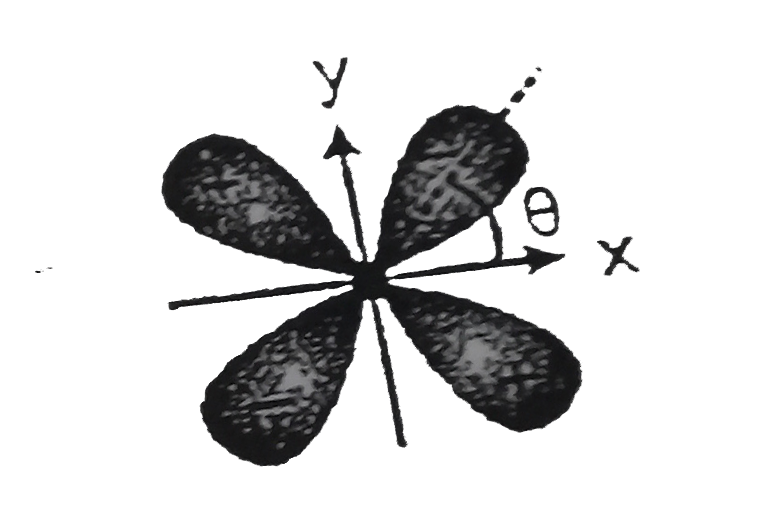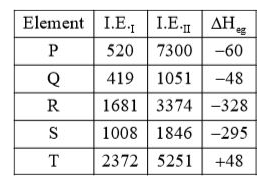Which of the following statement is correct for 3d-transition element
All the metals except Sc forms 'MO' oxide
All the metals except Zn forms 'MO' oxide
All the metals except Zn and Sc form 'MO' oxide
All the metals except Mn forms 'MO' oxide
The correct Answer is:A
To determine which statement is correct for 3d-transition elements, we need to analyze the oxidation states and properties of these elements. Here’s a step-by-step breakdown of the solution:
Step 1: Identify the 3d Transition Elements
The 3d transition elements include:
- Scandium (Sc)
- Titanium (Ti)
- Vanadium (V)
- Chromium (Cr)
- Manganese (Mn)
- Iron (Fe)
- Cobalt (Co)
- Nickel (Ni)
- Copper (Cu)
- Zinc (Zn)
Step 2: Determine the Outermost Electron Configuration
The outermost electron configurations of these elements are as follows:
- Sc: (Ar) 3d¹ 4s²
- Ti: (Ar) 3d² 4s²
- V: (Ar) 3d³ 4s²
- Cr: (Ar) 3d⁵ 4s¹
- Mn: (Ar) 3d⁵ 4s²
- Fe: (Ar) 3d⁶ 4s²
- Co: (Ar) 3d⁷ 4s²
- Ni: (Ar) 3d⁸ 4s²
- Cu: (Ar) 3d¹⁰ 4s¹
- Zn: (Ar) 3d¹⁰ 4s²
Step 3: Analyze Oxidation States
- Scandium (Sc): Common oxidation state +3.
- Titanium (Ti): Common oxidation states +2, +3, +4.
- Vanadium (V): Common oxidation states +2, +3, +4, +5.
- Chromium (Cr): Common oxidation states +2, +3, +6, but stable at +3.
- Manganese (Mn): Common oxidation states +2, +4, +7.
- Iron (Fe): Common oxidation states +2, +3.
- Cobalt (Co): Common oxidation states +2, +3.
- Nickel (Ni): Common oxidation states +2, +3.
- Copper (Cu): Common oxidation states +1, +2.
- Zinc (Zn): Common oxidation state +2.
Step 4: Evaluate the Statements
1. All metals except Scandium form MO: This statement is generally true as most transition metals form metal oxides.
2. All metals except Zinc: This is incorrect because zinc does form oxides.
3. Zinc and Scandium: This is incorrect as both can form oxides.
4. Manganese: This is too vague and does not provide a complete statement.
Conclusion
The correct statement is: All metals except Scandium form metal oxides.
The 3d transition elements include:
- Scandium (Sc)
- Titanium (Ti)
- Vanadium (V)
- Chromium (Cr)
- Manganese (Mn)
- Iron (Fe)
- Cobalt (Co)
- Nickel (Ni)
- Copper (Cu)
- Zinc (Zn)
The outermost electron configurations of these elements are as follows:
- Sc: (Ar) 3d¹ 4s²
- Ti: (Ar) 3d² 4s²
- V: (Ar) 3d³ 4s²
- Cr: (Ar) 3d⁵ 4s¹
- Mn: (Ar) 3d⁵ 4s²
- Fe: (Ar) 3d⁶ 4s²
- Co: (Ar) 3d⁷ 4s²
- Ni: (Ar) 3d⁸ 4s²
- Cu: (Ar) 3d¹⁰ 4s¹
- Zn: (Ar) 3d¹⁰ 4s²
- Scandium (Sc): Common oxidation state +3.
- Titanium (Ti): Common oxidation states +2, +3, +4.
- Vanadium (V): Common oxidation states +2, +3, +4, +5.
- Chromium (Cr): Common oxidation states +2, +3, +6, but stable at +3.
- Manganese (Mn): Common oxidation states +2, +4, +7.
- Iron (Fe): Common oxidation states +2, +3.
- Cobalt (Co): Common oxidation states +2, +3.
- Nickel (Ni): Common oxidation states +2, +3.
- Copper (Cu): Common oxidation states +1, +2.
- Zinc (Zn): Common oxidation state +2.
1. All metals except Scandium form MO: This statement is generally true as most transition metals form metal oxides.
2. All metals except Zinc: This is incorrect because zinc does form oxides.
3. Zinc and Scandium: This is incorrect as both can form oxides.
4. Manganese: This is too vague and does not provide a complete statement.
The correct statement is: All metals except Scandium form metal oxides.
Topper's Solved these Questions
- ALCOHOLS, PHENOLS AND ETHERSBOOK - AAKASH INSTITUTECHAPTER - ALCOHOLS, PHENOLS AND ETHERSEXERCISE - Try yourself
4 Videos
- ALCOHOLS, PHENOLS AND ETHERSBOOK - AAKASH INSTITUTECHAPTER - ALCOHOLS, PHENOLS AND ETHERSEXERCISE - Exercise
40 Videos
- ALCOHOLS, PHENOLS AND ETHERS BOOK - AAKASH INSTITUTECHAPTER - ALCOHOLS, PHENOLS AND ETHERS EXERCISE - Try Yourself
5 Videos
Similar Questions
Knowledge Check
Which one of the following statement is true for transition elements
AThey exhibit diamagnetismBThey exhibit inert pair effectCThey do not form alloysDThey show variable oxidation statesWhich of the following statements is true for transition elements ?
AThey are diamagneticBThey shows variable oxidation statesCThey do not form alloyDThey shows inert pair effectWhich of the following statements is wrong for the transition elements?
ATransition elements are placed from 3rd to 6th periodBLast electron enters in (n−d)d subshellCExhibits variable valencyDGeneral electronic configuration is (n−1)d1−10ns1−2.
Which of the following statements concerning transition elements is false?
View SolutionWhich of the following statements concerning transition elements is false?
View SolutionWhich of the following statement is correct for s-block elements:
View SolutionWhich of the following statement is correct for 3dxy orbitals ?

View SolutionWhich of the following statement is correct about the atom of an element ?
View Solution

